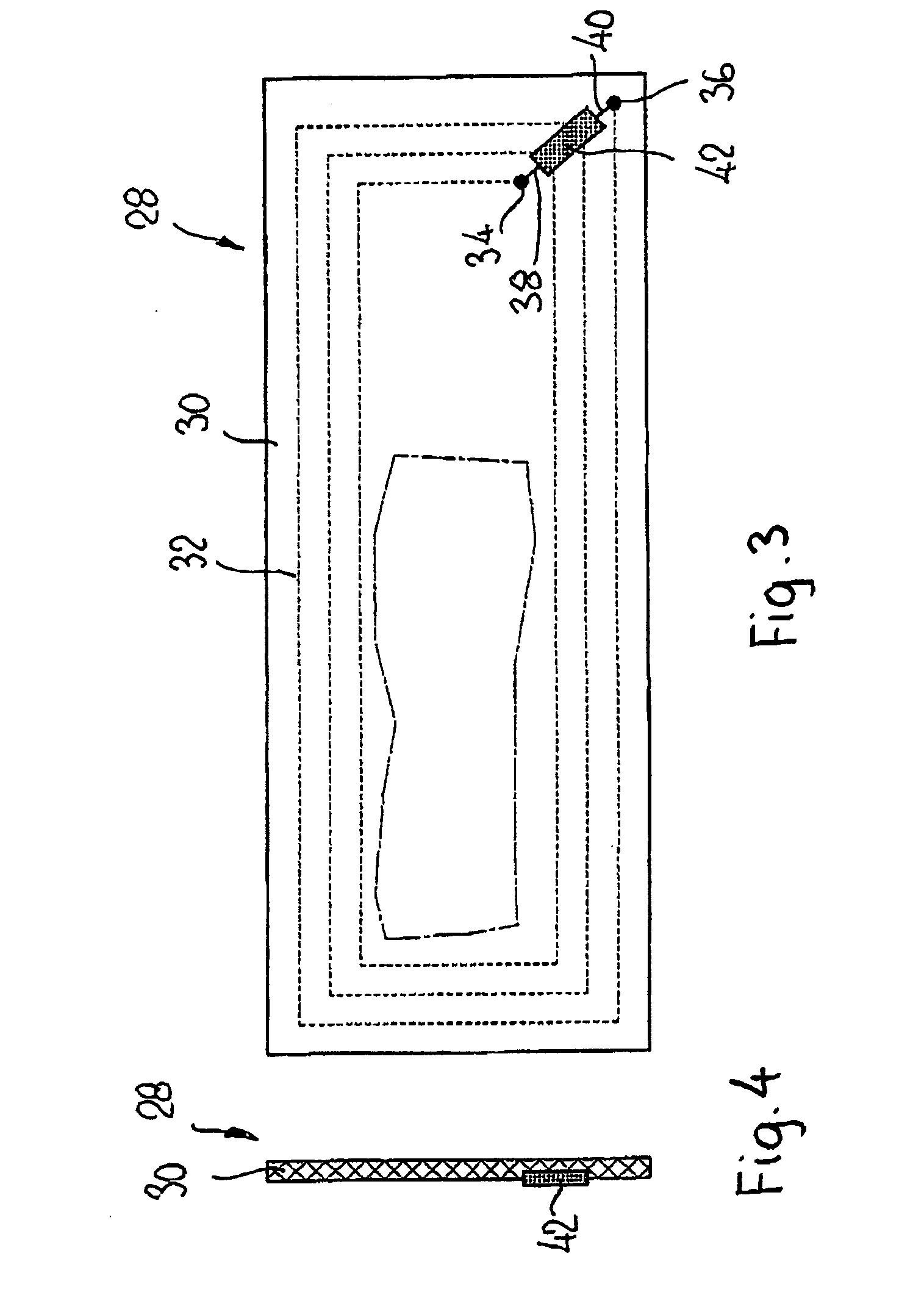RFID tag and method and device for the production thereof
a technology of rfid tags and tags, which is applied in the field of rfid tags, can solve the problems of affecting the wearing comfort, difficult production of multi-layer rfid tags, and inflexibility of rfid tags, so as to improve the flexibility of rfid tags and therefore their handling and wearing comfor
- Summary
- Abstract
- Description
- Claims
- Application Information
AI Technical Summary
Benefits of technology
Problems solved by technology
Method used
Image
Examples
Embodiment Construction
[0030]FIGS. 1 and 2 show an RFID tag 2 which has a design tag 4, on the rear side 6 of which there is arranged a transponder tag 8. This transponder tag 8 has a carrier layer 10, in which an antenna 12 is arranged in the form of a meander. A chip 14 has lugs 16, by means of which the chip is connected to antenna sections 18, 20. The antenna sections 18, 20 are provided on a short-circuit bridge 22 having an interruption 24. The transponder tag 8 is somewhat shorter than the design tag 4 and, for example, is adhesively bonded or welded to the design tag at a connecting point 26 in the region of the leading edge of the transponder tag.
[0031]FIGS. 3 and 4 show a further transponder tag 28, which has a carrier layer 30 on which an antenna 32 is arranged in the manner of a coil, the ends 34, 36 of which are connected to terminals 38, 40 of a chip 42. Such a transponder tag 28 can also be connected to a design tag of the type described in FIGS. 1 and 2.
[0032]The transponder tags shown in ...
PUM
| Property | Measurement | Unit |
|---|---|---|
| Angle | aaaaa | aaaaa |
| Length | aaaaa | aaaaa |
Abstract
Description
Claims
Application Information
 Login to View More
Login to View More - R&D
- Intellectual Property
- Life Sciences
- Materials
- Tech Scout
- Unparalleled Data Quality
- Higher Quality Content
- 60% Fewer Hallucinations
Browse by: Latest US Patents, China's latest patents, Technical Efficacy Thesaurus, Application Domain, Technology Topic, Popular Technical Reports.
© 2025 PatSnap. All rights reserved.Legal|Privacy policy|Modern Slavery Act Transparency Statement|Sitemap|About US| Contact US: help@patsnap.com



